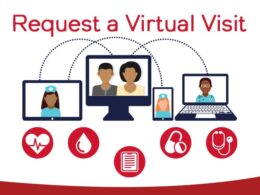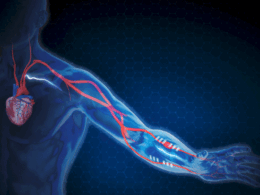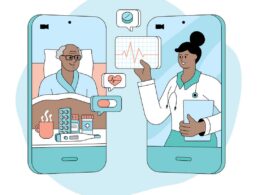Forbes, Council Post
David Joosten
Dec 16, 2021
companyconnecting
The rural care crisis
Rural Americans form 15–20% of the U.S. population but face disproportionate healthcare inequities.
More than 130 rural hospitals have closed over the past decade.
Eight hundred additional American rural hospitals — over 40% of all rural hospitals in this country — are at risk of closing, according to a report from the Center for Healthcare Quality and Payment Reform.
The Supply Crisis of Physicians
Meanwhile, another crisis looms: The Association of American Medical Colleges says the gap between the country’s increasing healthcare demands and the supply of doctors to respond adequately will worsen as the population continues to grow and age.
This will lead to a shortfall of between 54,100 and 139,000 American physicians by 2033.
In both cases, technology can step in and help.
How RPM Will Monitor Our Health At Home (Remote Patient Monitoring)
During the lockdown, necessity made telehealth commonplace, while also removing the long commute for rural patients.
With telehealth, rural patients could meet with their physicians with just an internet connection and a device.
Other technologies such as remote patient monitoring (RPM) can have an equally seismic impact on rural areas.
Even further, emerging technologies can help lessen the impending physician shortfall.
In rural areas, many patients can remain at home with RPM and telehealth, with no compromise in services or readmission to the hospital.
Hospitals have fixed costs that remain high; cutting down on hospital readmission helps patients to avoid expenses.
According to Insider Intelligence, the University of Pittsburgh Medical Center reduced the risk of hospital readmissions by 76% when patients were equipped with tablets and RPM equipment for use in their homes.
Additionally, 90% of the patients gave the experience high scores for satisfaction.
RPM and other technologies can also aid in the impending physician shortage.
Technology can’t replace doctors — we need more of them, no matter what — but we can enable doctors to be in more than one place simultaneously.
RPM can monitor patients for clinically meaningful changes.
It can also reduce errors through real-time data gathering and provide greater access to services so the healthcare provider can improve its level of care.
With patient information centralized in the cloud — and with 5G connectivity and edge computing — physicians can more easily work with patient information, without needless silos and time-wasting or dated technologies standing in the way.
Additionally, RPM devices that rely on technologies such as AI-enabled analytics can provide continuous analysis for a seemingly endless variety of use cases, including maternity care, care for those in quarantine with Covid-19 and cardiac patient care.
How 5G-Powered Technologies Can Help Train New Doctors
Seniors in independent living facilities can also benefit: Their homes can have built-in sensors that detect falls and smart refrigerators that know when they haven’t been opened in a while (meaning the patient hasn’t eaten recently).
As these technologies gain further acceptance, they will be applied to still more use cases. We haven’t even begun to imagine the possibilities.
We need 5G and edge computing to revolutionize the healthcare system. 5G connectivity, when combined with edge computing, can process data much faster than the technologies that precede it. 5G isn’t another “G” — it’s something entirely new.
Monitoring devices can rapidly process data in near-real time, allowing for early intervention should the device detect a problem.
5G connectivity can also drive smaller, less-expensive facilities (say, in rural areas). With 5G and edge computing powering the facilities, we can help eliminate the healthcare inequities between rural and urban/suburban regions.
But no matter what, we need more doctors. 5G connectivity — and emerging technologies such as VR — are having an impact on training more doctors.
In the U.K. and the U.S., companies such as Proximie, with which my company has a pilot program underway, have developed a platform to enable remote ultrasound and surgical training over a video link.
Cameras are set up in surgical theaters to film and transmit live videos of an operation, allowing medical trainers to supervise and instruct their students.
With 5G connectivity, this could happen in near-real time, regardless of distance. Trainers could also use augmented reality to overlay 3D images such as anatomical diagrams onto live streams.
Make Your Facility Ready For The Future
With AI, digital training can advance still further.
For example, AI models could be used in training and exams to analyze and measure performance — how a student moves a particular instrument, how long they take to perform a task and how effective their technique is.
There’s a lot of potential — the technology is either ready or well on its way. It’s time to consider how to make healthcare flourish in the future.
Every healthcare facility will have unique needs and goals. Nonetheless, when contemplating technology upgrades for their facilities, healthcare executives should reconsider their digital strategies. Executives should consider these three questions.
- Where could 5G with edge computing help? Could the right investment help with RPM for your patients? Can it help alleviate the healthcare inequities that may exist in your area? Could it help to serve more patients, faster?
- Do you want to extend beyond the walls of your facility? To meet patients where they are — in rural locations or even miles away, in another city — you will likely need better technology and infrastructure.
- Do you want to cooperate with experts in other states or even other countries? In the future, there is a possibility of improving healthcare by gaining remote access to expertise. In addition, healthcare facilities could also provide access to others of their expertise.
Perhaps it sounds facile, but technology can revolutionize healthcare. It can help us to take control of our health and manage our progress while at home. But to carry out this goal, we must go further with digital healthcare. We must take advantage of emerging technologies running on a foundation of 5G and edge computing. Let’s get started.
Forbes Technology Council is an invitation-only community for world-class CIOs, CTOs and technology executives. Do I qualify?
About the author
President and CEO of Vodafone US Inc., leading Vodafone Business commercial operations throughout North America.
Originally published at https://www.forbes.com.












